Greetings!
Well into December now and Christmas is almost upon us. This week I continue my pilgrimage across Wales towards the holy island of Bardsey. Today’s offering sees me believing that I’m in some 17th century allegorical tale whilst Paul gets concerned for my health near the top of Hill Difficulty.
Keep travelling!
Uncle Travelling Matt
Don’t forget to check out the V-log of this trip!
Links to all parts of this travelogue:
Links to accounts of all my pilgrimages:
Pilgrimages: To the Holy Island
Pilgrimages: Nazareth in Norfolk
Pilgrimages: And Those Feet Did...
Pilgrimages: The Sacred Heart of Wales
The Third Day
The best laid plans of mice and men…
Prior to coming out I’d done my homework. There were two ancient pilgrimage routes to Bardsey: one along the north coast of the Llŷn from Clynnog Fawr and the other along the south coast from Pwllheli. Both ended at Aberdaron, or to be more precise, Porth Meudwy from which the mediaeval pilgrims would take the boat for the short yet treacherous journey across the Bardsey Sound to the island itself.
I’d decided to take the northern route and so the plan was to stay near to Aberdaron, take a bus to Pwllheli and then another onto Clynnog Fawr from where we’d walk back, overnighting in a bed and breakfast at Nefyn, halfway along the route. I’d studiously researched and then printed out the bus times and made sure that we got to Aberdaron a full twenty minutes before the bus departed, so we got a bacon bap and a coffee from the delightful little bakery next-door and then waited.
And waited.
Ten minutes after the bus was due to come, I wondered what was up. I went to the stop and yes, there it was in black and white: Monday to Saturday, (it was a Monday) there was a bus leaving at 0745. So where was it?
Then it dawned.
It was a Monday, yes, but it was also a Bank Holiday. And there was no service on Sundays and Bank Holidays the timetable declared in both English and Welsh. “Looks like I’m driving to Clynnog Fawr then,” said Paul.
And that he duly did.
Bardsey Island was a major pilgrimage destination during the Middle Ages. Dubbed the ‘Rome of Britain’, thousands made their way there, over mountains and bogs, before finally braving the treacherous sound to reach the island of twenty-thousand saints whose monastery was founded by St. Cadfan in 516 and sanctified by holy personages ever since as “the holy place of burial for all the bravest and best in the land”. So blessed was it that the Pope declared that three trips to Bardsey equalled one to Rome and bards called it “the land of indulgences, absolution and pardon, the road to Heaven, and the gate to Paradise”. Consequently, it was a major pilgrimage destination until the Reformation and on the northern route to it, no stop was more important than the church at Clynnog Fawr for that place had holy credentials of its own, being the site of a miraculous healing well and the tomb of St. Beuno. So where better to start our own pilgrimage then, than at Clynnog Fawr’s majestic Church of St. Beuno?
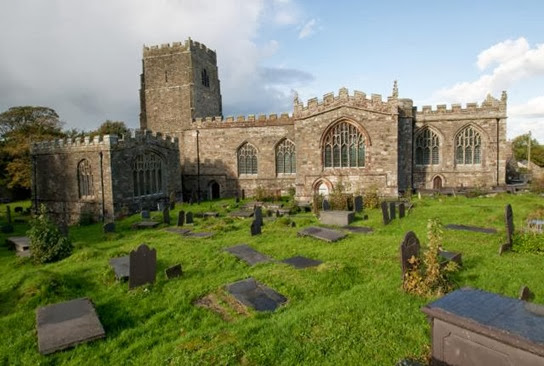 The Church of St. Beuno at Clynnog Fawr: the tomb of the saint is in the separate chapel to the left
The Church of St. Beuno at Clynnog Fawr: the tomb of the saint is in the separate chapel to the left
I’d come across this saint before. Beuno was the uncle of St. Winifred whose healing well at Holywell on the North Wales Coast is dubbed ‘The Lourdes of Wales’ and attracts thousands of pilgrims annually. The legend says that it was Beuno who miraculously restored the virgin back to life after the evil Prince Caradoc decapitated her after she refused to yield her virginity to him, before then calling down the wrath of Heaven upon Caradoc himself who was promptly swallowed into the ground. But St. Beuno was well-loved across the northern regions of Wales for more than just his role in Winifred’s tale; he evangelised the entire region before retiring to his monastery at Clynnog Fawr where, after experiencing a vision, he passed away in the company of his monks. That is why Clynnog Fawr boasts such a spectacular church – a relic of the 15th century when pilgrimage and veneration of the saints was at its height – and the old saint’s chest is still on display. I prayed the rosary at the light and airy altar of Beuno’s church and then we set off on our journey.
The first four miles or so were dull and monotonous along the newly-built road to Trefor. The ancient pilgrims took a more inland path as the area was marshland in their day but we knew just how much ground we had to cover and so followed the more direct route. As we marches a rhythm was established and I mulled things over in my mind, not just the pilgrimage but also a forthcoming job interview. Over the previous year I had grown increasingly unhappy at work due to not feeling challenged sufficiently and the adoption of a managerial style which I felt did not have the complex needs of our, often very vulnerable, students (and staff) at heart. So it was that I’d applied for work in a sector that was new to me and that raised many questions: Did God wish me to go in this new direction? If I got the job, would I cope, or, equally important, if I did not, how would I cope then with the disappointment? Then I took advantage of being on the trip with a good and trusted friend and did a dry run of my presentation with Paul. Thankfully, he liked it, but suggested some improvements which I then tried to incorporate.
Trefor is not referred to on any of the original pilgrimage routes because it is essentially a rather new place, built in the 19th century to serve the large quarries on Yr Eifl above the town. Not having a map of this section of the walk, (our OS of the Llyn started just south of the village), we made do with rough pilgrim maps that were not really fit for purpose and found ourselves walking through a National Trust property to the sea. At first I wondered as to why the National Trust has bothered to acquire such a piece of land as it looked just like a normal field when we entered but as we walked it transformed into a beautiful fern-covered valley before ending at the clifftops from where a stunning view was commanded. We then took the coastal path for about half a mile until something very unexpected happened. By a pile of stones that I suspect were Neolithic, the path abruptly ended at a sheer cliff face.
“Not impressed with this Wales Coastal Path,” I said to Paul.
“Maybe we should have gone down along the beach?” he suggested.
The idea seemed a good one, (certainly, there didn’t seem to be any other way to go), so we scrambled down the cliff to said beach, except that once there our problems were far from over. This was no usual beach you see; it was stony and the stones were as big as dining tables. Cone could not walk along such a beach; instead one had to jump from boulder to boulder.
This we did, determinedly, laboriously, sweat streaming from our brows and plastering our backs. What kind of hell was this? I looked before me and saw only a seemingly endless slough of giant-sized pebbles with what looked like an impassable cliff on the horizon,[1] whilst to my right lay the tank grey sea and to my left a steep mountainside strewn with boulders and the detritus of a century of quarrying. The scene which, only half an hour or so before, had appeared so wildly beautiful, now appeared like a vision of Hell with us marauded on the slopes of Mordor, Lilliputians in a demonic realm of oversized – and dangerous – boulders. All ways seemed impassable and yet, well, we were men and men don’t give up! We carried onwards, not a word said.
But some ten minutes after that I stopped, sat on one of those Brobdingnagian pebbles and waited for Paul to catch up. “ We need to go back,” I said. He did not disagree but similarly, did not like to agree. Going back was failure and we were men, stubborn men. But the way forward was impossible, even an idiot like me could see that now; the headland beyond the beach ended in a sheer cliff into the sea and the mountains were unclimbable without equipment. A return back from whence we had come was no welcome prospect, clamouring over boulders, and then scaling a cliff let alone that harder mental task of admitting that we had made a mistake. “We could try going on, perhaps…?” suggested Paul, but in our hearts we both knew the answer. We turned back and started to retrace our steps.
Pilgrimage is there to teach us, pilgrimage always surprises, but what was the lesson to be learnt here? For some reason my mind kept returning to John Bunyan’s ‘Pilgrim’s Progress’ which I’d read years before after picking up a copy in the local synagogue (!), and in particular the episode of the Slough of Despond came to me:
‘Now I saw in my dream, that just as they had ended this talk, they drew nigh to a very miry slough that was in the midst of the plain: and they being heedless, did both fall suddenly into the bog. The name of the slough was Despond. Here, therefore, they wallowed for a time, being grievously bedaubed with the dirt; and Christian, because of the burden that was on his back began to sink in the mire.’
So this was our Slough of Despond, a rocky rather than a muddy one, but a dangerous slough nonetheless. And its purpose? Well, like Christian and Pliable, we too had been heedless, but perhaps Stubbornness was our travelling companion, maybe Pride also? Both Paul and I admitted that we’d had internal doubts about the path as far back as the clifftops – for a recognised, established and maintained coastal path, it had been awfully done, and when it had ended in a sheer cliff face then that should have been it. But no, proud and stubborn as we both were, independently, rather than voice our doubts, we’d carried on. We are men; we can do it; who needs a proper path anyway? But sometimes we can’t do it, we are as fallible as anyone else and the way was impassable for good reason, for it was not the Wales Coastal Path, (which around that headland ventures inland), and instead, by mistake, we had merely stumbled onto a track to an ancient pile of rubble. On the boulder-strewn beach from Hell we had both been taught then first lesson of our pilgrimage. Thankfully, unlike Christian in the book, my travelling companion was Paul and not Pliable, who at that point gives up and heads back home to the City of Destruction.
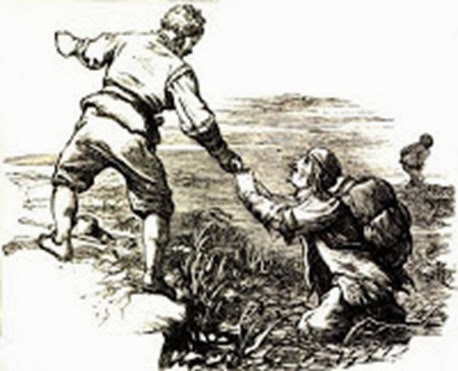 Helped out of the Slough of Despond
Helped out of the Slough of Despond
And once that lesson had sunk in, I was thankful and the words of Bunyan’s only hymn, (which I had copied down from the display board in Clynnog Fawr that morning), came to me:
‘Who would true valour see
Let him come hither
One here will constant be
Come wind, come weather
There’s no discouragement
Shall make him once relent
His first avowed intent
To be a pilgrim’
And as if to reward us for learning our lesson and to give us a sign for future travails, (which we did not recognise),[2] on a whim back in Trefor, I elected to take a different road and came across by chance, a natural spring. Our water supplies had all been drunk on the beach, so we eagerly refilled our bottles and refreshed ourselves before moving onwards.
And it was a good thing that we did for the next section of the route began to lead uphill at a rather alarming gradient. I stormed up determined to conquer this hill, but the brow of it never came, instead the road just went on and on. We rested, then walked, rested then walked, the rests becoming longer and the walks shorter, until it dawned on us at the one of the rests that the enormous mountain ahead of us, well, there was no way round it. Yes indeed, we were climbing Hill Difficulty!
The mountain was Yr Eifl[3] and it was one of the biggest obstacles that the pilgrims had to negotiate in mediaeval times. It had two peaks with a very slight dip between the two through which our path passed. The latter stages of the climb revealed a new kind of Hell for me, different to the one on the beach. There the challenge was to defeat pride and turn back; here we both knew that there was no turning back, we were on the right path and to proceed the mountain had to be conquered. For an experienced mountain, Yr Eifl is probably a mere walk in the park but for someone as out-of-shape as me it was an endurance test; an endurance test that I very almost failed. In the latter stages I resorted to counting the telegraph poles on the line running beside us; I’d walk the distance between two and then rest, walk and rest. Still shy of the summit, I found that I couldn’t even do that and I collapsed on the heather to recover. It was the wise thing to do for Paul later admitted that the level of my wheezing had begun to worry him. Aerobic exercise, (e.g. distance walking), I was used to but anaerobic exercise, (e.g. hill walking), I was not.
And so I collapsed and so we stayed there on that purple mountainside and after my body had begun to recover I opened my eyes and began to appreciate the beauty of the spot which commanded fine views north-west to Caernafon and Anglesey, mist on the slopes of Snowdonia, all drenched in an ambience of absolute peace. We rested and read awhile and then eventually – that mountain mist looking like it was getting nearer – we moved on. It was still hard, but it was doable and within no time at all we had conquered Yr Eifl.
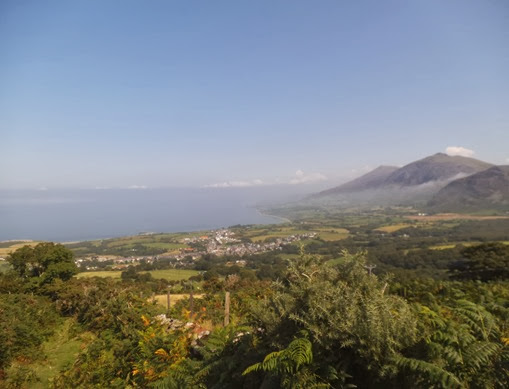 Hill Difficulty: The way back: Trefor to Clynnog Fawr from Yr Eifl
Hill Difficulty: The way back: Trefor to Clynnog Fawr from Yr Eifl
 Hill Difficulty: The way forward: Graig Ddu covered by mists
Hill Difficulty: The way forward: Graig Ddu covered by mists
After which it was all downhill. Literally. We walked along the top of the chasm of Graig Ddu, a spot of extreme beauty with the mists covering and then revealing the pine-clad slopes across the chasm from us in a scene which reminded me of the Japan Alps, and then it was through fields – including one with a rather scary-looking bull whom we steered well clear of – for several miles until we dropped down into a hollow and stepped into the sanctuary of Pistyll Church.
The Church of St. Beuno is one of the original churches along the Bardsey pilgrimage route and it would have welcomed those who traipsed that way throughout the Middle Ages. Founded by the same early evangelist of North Wales as Clynnog Fawr. Although the present structure is a rebuild, dating from the 12th century and not the 7th, it conveys the atmosphere of those early years of Christianity in Wales more than any other church I visited on the trip. It is possibly the most beautiful church that I have ever stepped inside; it is simple, bare stone walls and a floor strewn with straw, candles punctuating the darkness, an inscription in Welsh above the altar and it is open for all pilgrims with free drinking water supplied in bottles from the local spring. After the Slough of Despond and Hill Difficulty, the rosary that I said knelt in a pew in this glimpse of Heaven on earth was profound.
Interestingly though, we are not all the same. I left the building to find Paul sat on a gravestone looking out to sea. He’d liked the church alright, but preferred it out there, in the open, gazing out onto the same endless ocean that had been his companion on numberless visits to the caravan that his parents had once owned near to Youghal on Ireland’s southern coast.
Just outside the church we met two more walkers. They weren’t pilgrims that day but had walked the route in the past for sacred reasons as well as several other pilgrimage routes including the Saints’ Way in Cornwall which I was most interested to learn about and parts of the Road to Santiago which Paul had also walked a piece of the summer before.
Perhaps understandably, Paul talked a lot about his trip along the Way. He’d found it a powerful and moving experience, particularly meeting other pilgrims – both sacred and secular – from across the globe, but he’d done it with his dad whose idea of a pilgrimage was quite different to Paul’s and this had caused tension. We talked at great length as to how different people seek – and find – very different things in religion. Some look for change in the future, others confirmation of the past, and whilst no resolution was ever reached concerning his particular issues, I think that the conversations helped.
The last few miles into Nefyn were easy-going and although our halt at Pistyll gave me a boost for the first mile following the church, after that it became hard and the difference between the aerobic and anaerobic exercise became clear. The anaerobic climb up Yr Eifl had been hell at the time, but the recovery was surprisingly quick; at not time did the long, slow plod of aerobic exercise become so difficult that I had to stop and recover my breath, but the footsore weariness, slowly and unexpectedly became worse until as we entered the village, each step had become a struggle.
On the edge of Nefyn we passed some council houses outside of which some kids were playing amongst fishing nets left out to dry. It was nice to see that fishing still is a viable occupation in an area where tourism is so prominent, but a little sad that the modern practitioners of the art which has sustained the region for millennia, that fundamental task of bringing in food for the table can only afford to dwell in the humblest of the community’s dwellings when those who do less necessary work live in mansions.
We paused briefly at Nefyn’s ancient church, but it was locked and so we limped on towards the centre of the village and the only open hostelry – ‘Y Folt’ (‘The Vault’).
‘Y Folt’ was, without any doubt whatsoever, the worst that I have ever set foot in. A cross between a youth hostel club and the worst kind of wine bar, it was an ale drinker’s hell with only bland lager on tap. But for us, even that was welcome and so we sat within its horrendously modern and tasteless confines, waited for ten minutes until the landlord returned from wherever it was that he’d gone to, ordered a pint each and then amused ourselves with the nineties pop videos that were showing on the TV. Impious as the thoughts may have been, my abiding memory of ‘Y Folt’ is of being reminded of just how attractive Nicole Appleton of the All Saints really was.
Having recovered a little, we then had another problem caused, (as, alas, so many problems are), by my lack of foresight. I’d forgotten to bring the name and address of our B&B. However, I remembered from my phone call with the proprietor that it was newly-opened that year and four star and thus, in a small place like Nefyn, well, there can’t be too many places like that now, can there?
I gave these facts to the landlord of ‘Y Folt’ and he had a chat with the woman in the shop next door and they directed me to the right place. Except that it wasn’t the right place, but the owner of this place knew where was and so he called up our host for the night and she came around to collect us which, shattered as we were, we were both extremely grateful for.
[1] Trwyn y Gorlech
[2] Having been reminded of ‘Pilgrim’s Progress, I should perhaps have remembered this passage also: ‘Now I understand that they all continued on till they came to the foot of a Hill, at the bottom of which was a spring. At this same place two other ways joined with the straight way coming from the Wicket-gate; one turned to the left hand and the other to the right at the bottom of the Hill. However, the narrow way continued straight up the Hill, its name being Difficulty.’
[3] Its English name, ‘The Rivals’ is based on a mispronunciation of the Welsh name but is also fitting since it has two distinct – and thus rival – peaks.
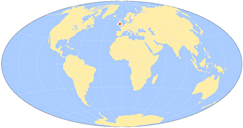

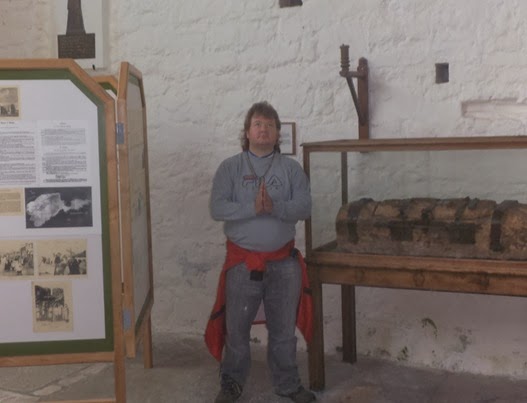
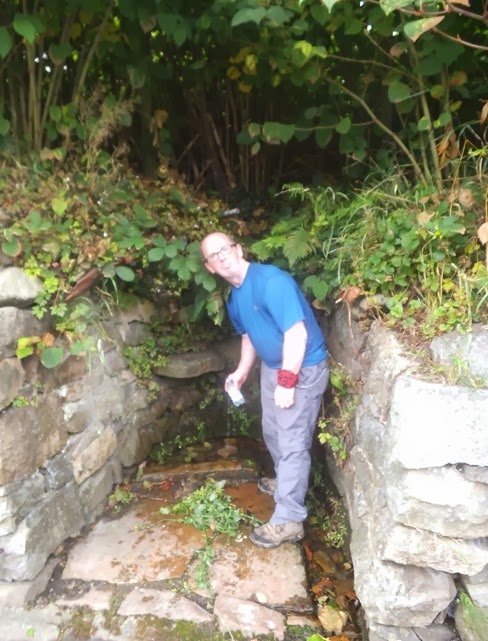
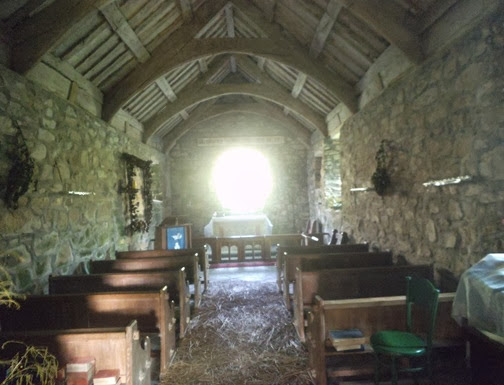
No comments:
Post a Comment